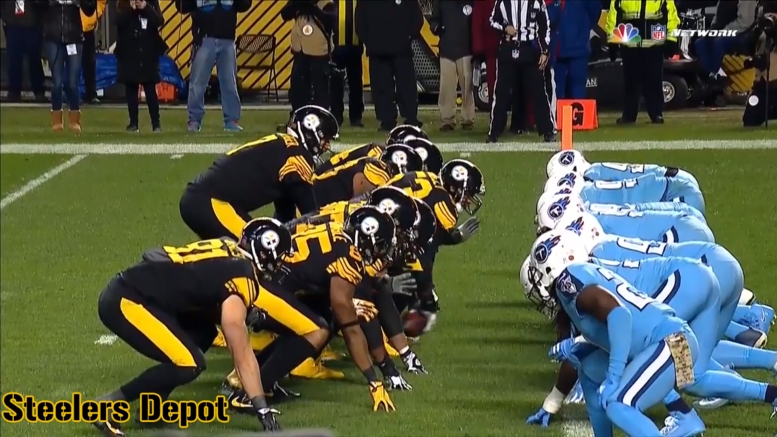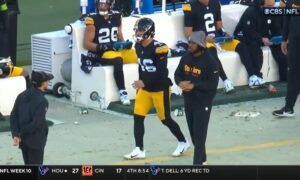The Pittsburgh Steelers have wrapped up their 2017 regular season and await the Jacksonville Jaguars as they play host in a Divisional Round game for the first time since 2010. It was an interesting year offensively that saw them, frankly, play an awful lot better in the second half than the first, though the opposite would be said of the defense.
- Personnel groupings:
- 01: 12/1130 (1.1%)
- 11: 781/1130 (69.1%)
- 12: 131/1130 (11.6%)
- 13: 25/1130 (2.2%)
- 21: 21/1130 (1.9%)
- 22: 125/1130 (11.1%)
- 23: 9/1130 (0.8%)
- V-32: 21/1130 (1.9%)
- As you can see, no package came even close to matching the extent to which the Steelers used 11 personnel, which is three wide receivers paired with one running back and one tight end. If you include the 12 snaps in which they used four receivers, then they had at least three on the field for over 70 percent of their plays.
- The 12 and 22 packages were pretty close this year, within half a percentage point in terms of usage, and, combined, accounting for about 22.7 percent of their offensive plays. Overall, they used multiple tight ends about a quarter of the time.
- The Steelers used three different players as tackle-eligible tight ends this season, totaling just under 100 snaps. By the end of the season, Jerald Hawkins ended up playing the most snaps there, 49. Of course, Chris Hubbard spent the majority of the season starting at right tackle.
- Running back Le’Veon Bell logged 964 snaps this year. 114 of them came at wide receiver. And yes, one of those plays was even a carry, and he picked up 15 yards on the play.
- This season, the Steelers incorporated other positions into different roles more frequently. Both Jesse James and Vance McDonald took snaps in the backfield, for example—and also spent more time lined up out wide—while JuJu Smith-Schuster and Darrius Heyward-Bey spent some time at tight end.
- The Steelers ran 193 plays, officially, out of the no huddle. They averaged a net gain of 5.6 yards per play, though no-huddle offense tends to skew toward throwing the ball, so that would raise the average gain. Only about 15 percent of their snaps out of the no huddle were runs.
- On 662 dropbacks, the Steelers faced a blitz 156 times. The average net gain was 6.9 yards, tossing seven touchdowns and three interceptions.
- Play action, unsurprisingly, was an insignificant feature, just 65 snaps all season, which is less than 10 percent of all dropbacks. The average gain on such plays was 5.7 net yards, which is not particularly impressive. Yet it did yield four touchdowns and no turnovers. The average gain on non-play-action dropbacks was 7.1 yards. I wonder how many teams can say that.
- Average depth of target – 9.5 (620 targets)
- Vance McDonald – 8.0 (25 targets)
- Darrius Heyward–Bey – 13.5 (2 targets)
- Xavier Grimble – 8.5 (8 targets)
- Antonio Brown – 14.1 (176 targets)
- Jesse James – 6.5 (66 targets)
- Roosevelt Nix – 1 (3 targets)
- Fitzgerald Toussaint – -2.7 (3 targets)
- James Conner – -4 (1 target)
- Le’Veon Bell – .4 (108 targets)
- JuJu Smith-Schuster – 9.7 (82 targets)
- Eli Rogers – 8.3 (40 targets)
- Justin Hunter – 12.4 (10 targets)
- Martavis Bryant – 14.4 (95 targets)








